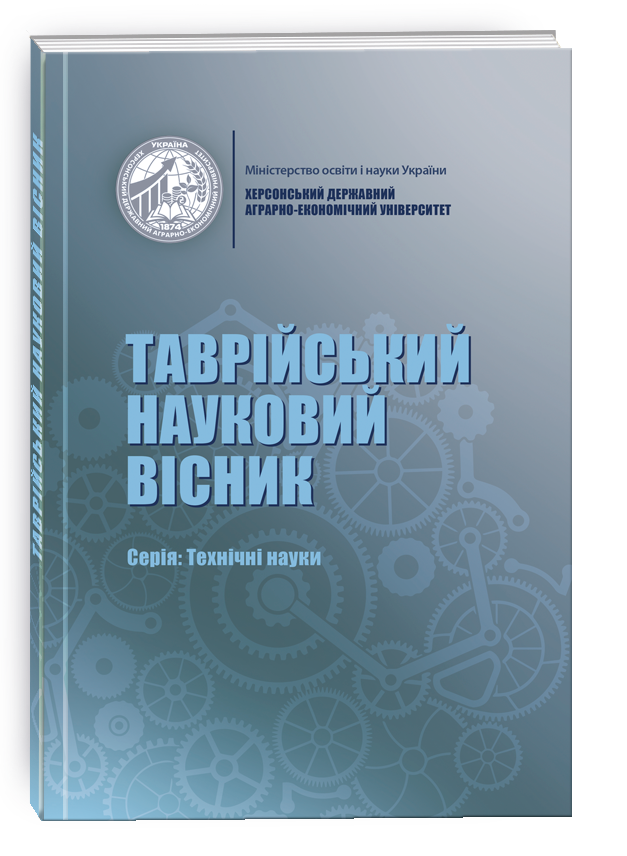THE FEATURES OF TOMATO SAUCE-BASED PASTILLE PRODUCTION TECHNOLOGY
DOI:
https://doi.org/10.32782/tnv-tech.2024.2.24Keywords:
tomatoes, tomato products, tomato sauce, pastilleAbstract
With the beginning of the Russian occupation of the Kherson region, major problems with the supply of raw materials for the domestic food industry began, since the Kherson region is one of the main suppliers of melon and vegetable crops. To a large extent, this was reflected in the production of tomato products. As a result, its range has significantly decreased, the number of imported products on store shelves has increased, the price of which remains quite high even today. The de-occupation of the right-bank part of the Kherson Region and the establishment of vegetable growing in other regions of our country improved the situation with this problem, but not to a sufficient extent. Therefore, the goal of the work is to develop a method of production and a recipe for tomato pastille that would be convenient to use and store. 6 samples of tomato paste were obtained. Each of the samples was dried at different values of the drying temperature: sample No. 1 – at 30 °C, sample No. 2 – at 35 °C, sample No. 3 – at 40 °C, sample No. 4 – at 45 °C, sample No. 5 – at 50 °C, sample No. 6 – at 55 °C. According to the results of the organoleptic evaluation, the best sample turned out to be a lozenge dried at a temperature of 50 °C. The drying temperature did not affect the taste and smell of the finished products, which were pronounced and corresponded to the raw materials used. At temperatures from 30 to 45 °C, uneven drying of the pastille was observed, and at temperatures from 45 to 55 °C, drying occurred more uniformly throughout its thickness. The shape of all the samples corresponded to the shape in which the tomato pastille was dried. The color of samples No. 4–6 was uniform, which was not observed for samples No. 1–3. In general, for all samples, the color of the products corresponded to the color of the raw materials used. After the organoleptic analysis, the composition of the obtained lozenge (sample No. 5) based on tomato sauce was determined, which was as follows: mass fraction of moisture – 15.26 %, protein – 14.30 %, fat – 4.68 %, fiber – 7.05 %, calcium – 2.76 g/kg, phosphorus – 3.25 g/kg, magnesium – 0.97 g/kg, sodium – 4.02%, iron – 41.03 mg/kg, zinc – 13.51 mg /kg, copper – 4.72 mg/kg, manganese – 9.68 mg/kg. The resulting product is convenient to store and consume, which will be useful to domestic consumers.
References
Іванова П.Х., Міхова Т.М. Розробка інноваційного висококонцентрованого продукту «Пастила із синіх сортів сливи домашньої (Prunus Domestica) та обліпихи (Hippophae Rhamnoides)». Здоров’я людини, теорія та методика фізичної культури та спорту. 2019. № 4, т. 15. С. 204–211.
Labate J. A., Grandillo S., Fulton T. Tomato Vegetables: book series. 2007. P. 1–125.
Дущак О.В., Бессараб О.С., Шутюк В.В. Дослідження впливу хімічного складу нових сортів томатів на якісні характеристики концентрованих томат-продуктів. Продовольчі ресурси. 2021. № 9, т. 17. С. 65–71.
Vorobiova N. Adaptability and productivity of tomato varieties in the foreststeppe of Ukraine. Vegetable and Melon Growing. 2021. № 69. P. 79–88.
Thybo A.K., Edelenbos M., Christensen L.P. Effect of organic growing systems on sensory quality and chemical composition of tomatoes. Food Science and Technology. 2006. Vol. 39, № 8. P. 835–843.
Hernandez S.M., Rodriguez Rodriguez E.M. Chemical composition of tomato (Lycopersicon esculentum) from Tenerife, the Canary Islands. Food Chemistry. 2008. Vol. 106, № 3. Р. 1046–1056.
Navarro-Gonzalez I., Garcia-Valverde V., Gariіa-Alonso J. Chemical profile, functional and antioxidant properties of tomato peel fiber. Food Research International. 2011. Vol. 44, № 5. P. 1528–1535.
Muhammad U.N., Sarfraz H., Saqib J. Tomato processing, lycopene and health benefits. Science Letters. 2015. Vol. 3, № 1. P. 1–5.
Соус овочевий з ферментованою сировиною: пат. № 136705 Україна: МПК A23L 2/00, A23L 27/24 (2016.01). №а 2019 03038; заявл. 28.03.2019; опубл. 27.08.2019, Бюл. № 16.
Томатний соус на основі грибів: пат. 101442 Україна: МПК A23L 1/39 (2006.01), A23L 1/28 (2006.01). №а 2015 02974; заявл. 10.09.2015; опубл. 10.09.2015, Бюл. № 17.
Соус червоний з топінамбуром: пат. 112639 Україна: МПК A23L 2/02 (2006.01), A23L 23/00 (2006.01). №а 2016 06326; заявл. 10.06.2016; опубл. 26.12.2016, Бюл. № 24.
Крафтовий соус «Кетчуп, збагачений селеном»: пат. 146035 Україна: МПК A23L 27/60 (2016.01), A23L 33/10 (2016.01), A23L 33/16 (2016.01). №a 2020 06233; заявл. 28.09.2020; опубл. 21.01.2021, Бюл. № 3.
Соус червоний основний: пат.147428 Україна: МПК A23L 23/00 (2016), A23L 19/00 (2016). №a 2020 08014; заявл. 06.05.2021; опубл. 05.05.2021, Бюл. № 3.
Ahmed D., Rai Muhammad A., Kashif A. Assessment of quality attributes of tomato sauce supplemented with moringa root. Food Science and Technology. 2020. Vol. 40, № 4. P. 1014–1020.
Листова фруктова пастила: пат. № 120447 Україна: МПК A23G 3/34 (2017.01), A23L 21/00 (2006.01). №а 2017 08761; заявл. 31.08.2017; опубл. 25.10.2017, Бюл. № 20.
Low P.Y., Tan C.P., Lim P.K. Application of red pitaya powder as a natural food colourant in fruit pastille. Jurnal Gizi Klinik Indonesia. 2017. Vol. 13, № 3. P. 111–120.
Khazaiy E. The effect of different levels of Spirulina Platensis microalgae and agar and guar hydrocolloids on water activity, texture, color parameters and Overall acceptability of kiwi puree-based fruit pastille. Journal of Food Science & Technology. 2015. Vol. 12, № 48. P. 47–59.
Basiri S. Assessment of Sensory, Texture and Color Properties of Functional Pastilles Containing Licorice (Glycyrrhiza glabra L.). Nutr Food Sci Res. 2020. Vol. 7, № 4. P. 27–32.
Zahorulko A., Kasabova K., Shmatchenko N. Improving Pastille Manufacturing Technology Using the Developed Multicomponent Fruit and Berry Paste. Eastern-European Journal of Enterprise Technologies. 2021. Vol. 3, № 11. P. 49–56.
Chitgar M.F. Effect of various concentrations of pectin on the color and anthocyanins stability of black barberry (Berberis cratagina) in the fruit pastille model system. Iranian Food Science & Technology Research Journal. 2018. Vol. 14, № 4. P. 617–628.







